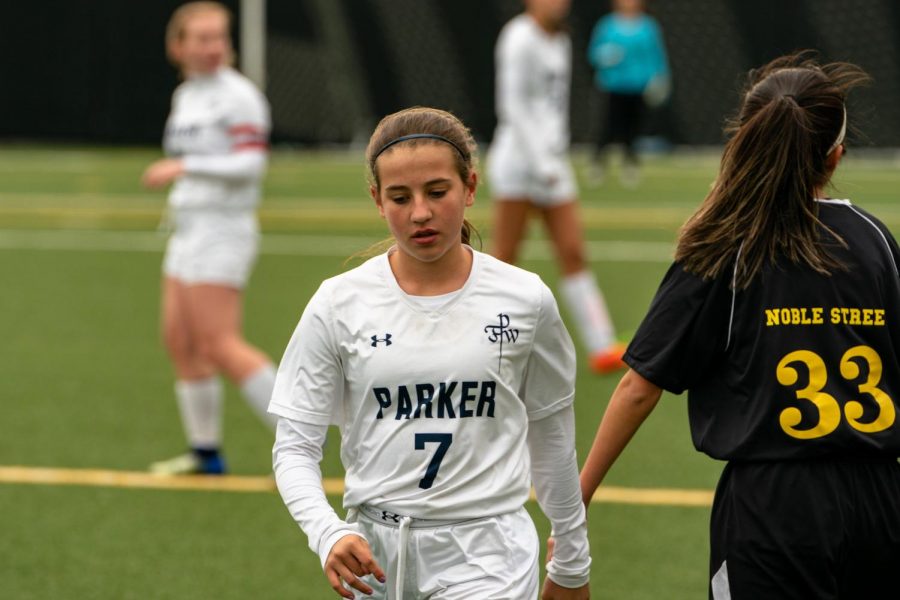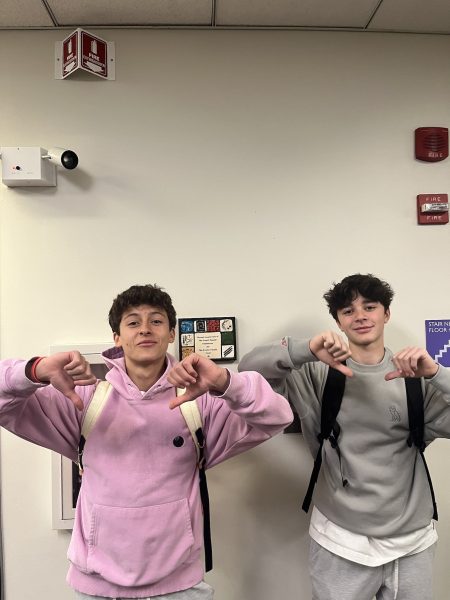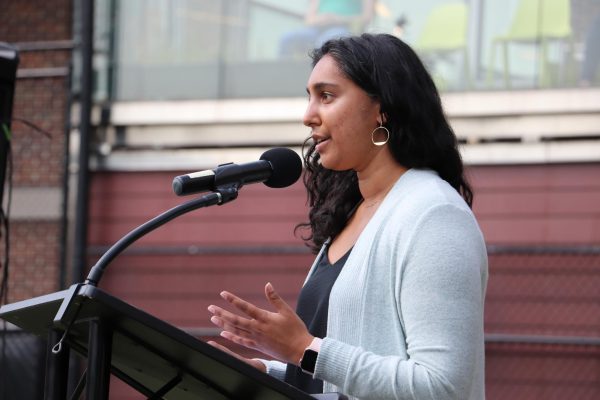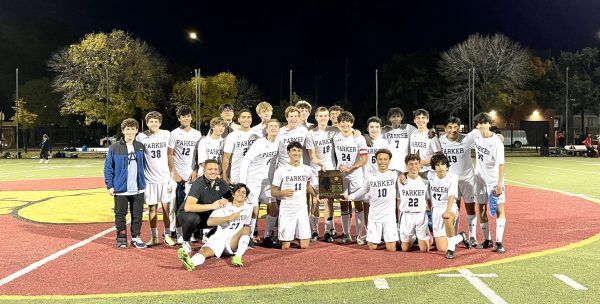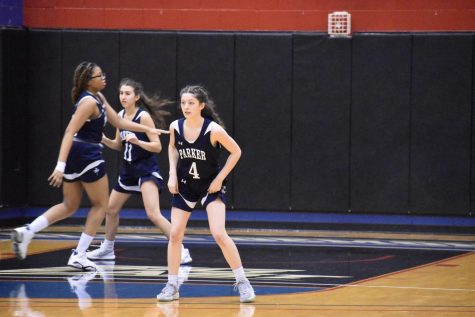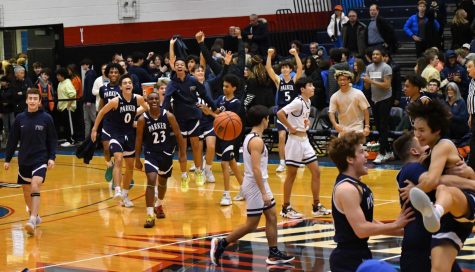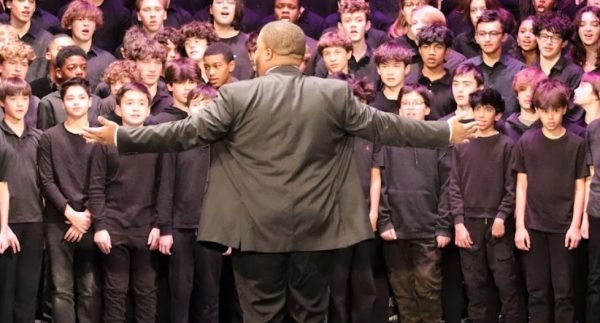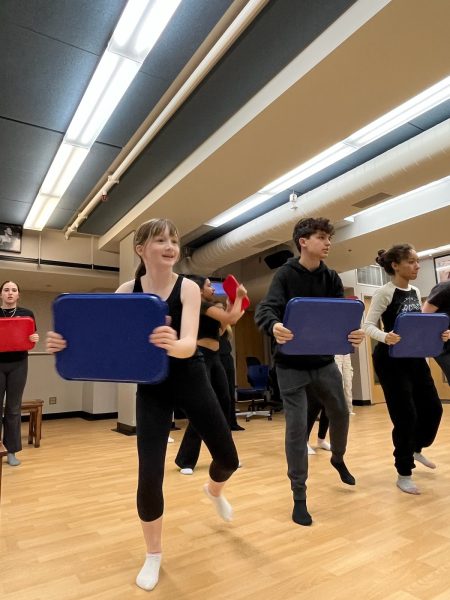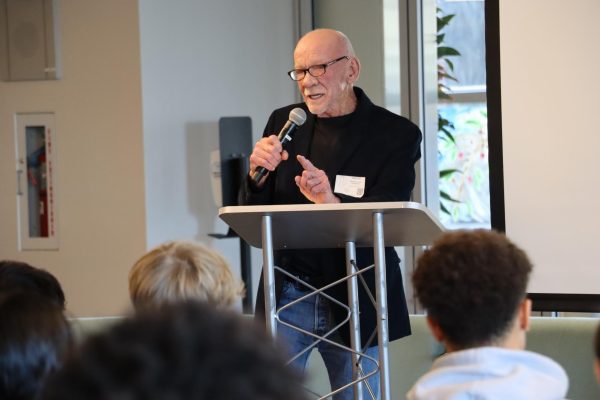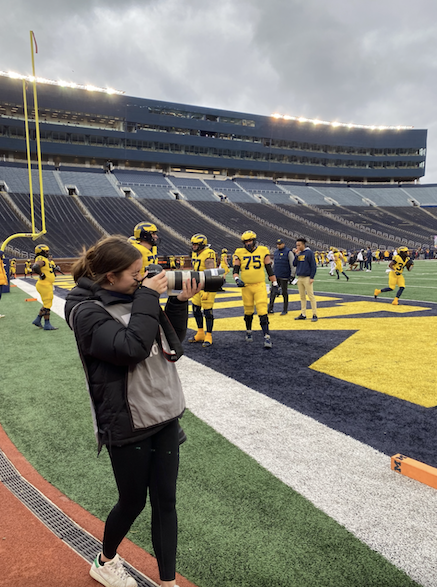Games aren’t Always Fun
Parker Spring Athletic Teams face an Increase of Games, and a Decrease of Recovery
Amelia Hoerr, during the girl’s soccer regional on the Parker turf on Friday May 11. Photo by Jon Rauschenberger.
“I’m dead,” sophomore Alex Ori said as she limped into Head Athletic Trainer Valentina Garcia’s office on Thursday May 10. “I can’t feel my ankle, my back is sore, and my legs are super tight.”
Ori is not the only student athlete on a lunch-time visit to “Val’s office.” Seven others are in line to be stretched, diagnosed, and given exercises. All seven are set to start in a contest for a varsity team in just a few hours–for the third time in four days.
This spring, the Parker athletic teams had atypical schedules, according to Parker Athletic Director Bobby Starks, and it was not just one team that had this experience. “We usually aim for about two to three games a week for teams,” Starks said, “but this spring most teams have four or five games a week.”
This season the lack of consistency in the schedule can be attributed to a few factors. “Well, this season it has been tough with the schedule for a few reasons,” said Starks. “First off, the weather was so bad in the early spring the we had to move so many games around to the end of the season. We also have just had a tougher time communicating with other schools, but that also related back to the weather, everyone is having a tough time.” The rain, and below freezing temperatures forced all schools to rearrange their schedules, it wasn’t only Parker who ended up with a crammed schedule this spring.
In the final three weeks of the spring season, the girls soccer, boys baseball, boys tennis, and girls softball teams averaged three games every four days. On top of practices.
“At the end of the year, we had this two-week period where we have six games in seven days, and the next week was five games in seven days,” James Cuevas, a Parker sophomore and member of the baseball team, said. “And it was just bad. We were all super-tired, so we started losing. I got behind on my homework and started going to bed super late.” The scheduling hurt several aspects of the student-athletes’ lives.
“On our ocasional off-days, we never had field space,” Ori said. “I think we had two practices on the field in the last month of the season.”
There was a ripple effect–since the Upper School teams had so many games, the Middle School teams could only play at Parker on a few occasions. “You know it was tough, we wanted the middle school teams to have as many home games as they could, but it did take away from our upper school teams practice time at our home field,” said Starks. The tight schedule hurt everyone involved, no one had ample field time for both games and practices.
For a team or athlete to improve, they need to practice, and they need to keep their bodies in peak condition. To be “conditioned” or “in shape” for a game means a few things. It’s not only being able to run a six-minute mile, or to do 100 push ups––many can train hard and accomplish those things. But to show up on a field or court in peak shape is a product of training, recovery time, and mental state.
Having proper recovery time and being in the correct mental state, moreover, go hand in hand. “Two days is typically a good recovery time for student athletes,” Garcia said. “As teenagers, student-athletes already have so much on their mind with school, which can put extra stress on their mental state if it is already compromised by a lack of recovery.”
Mental state has been discussed by athletes for decades. As Yogi Berra famously said, “The game is 90% mental and the other half physical.”
“Not being in a positive mental state also alters your physical state,” Garcia said, “as you can’t put 100% into focusing on sport, another reason why injury comes with lack of recovery.”
If athletes do not have field time to practice, they will not get better. Garcia said, “A team cannot be successful without practice and recovery time.”
This may be why this spring didn’t see more plaques brought back to Parker, according to Cuevas. “It affected us both mentally and physically,” Cuevas said. “Physically, we were just sore, but mentally we just had so many things to balance. We would have gone further in the playoffs if we had better scheduling with more recovery time.”



